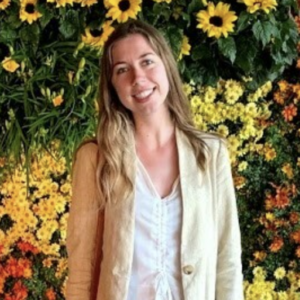In our highly connected, fast-paced world, the rapid spread of false information presents a unique and complex challenge to local governance. Increasingly, the Local Democracy Initiative at the National League of Cities has heard from members about how difficult it has become to combat the steady stream of rumors and to face accusations from residents that run the gamut from simple misunderstandings to malicious falsehoods.
What Are Mis, Dis, and Malinformation?
Mis, dis and malinformation (MDM) are all types of false information that the Cybersecurity and Infrastructure Security Agency (CISA) collectively refer to as “information activities.” Each can be used to create chaos, confusion and division but are distinguished based on the intent and impact of their use.
Misinformation—false information shared without harmful intent—seems to be ubiquitous and incessant. It shows up in Facebook posts from high school friends, arguments made across the Thanksgiving dinner table and in viral celebrity Tweets. People who share misinformation don’t do so with the aim of misleading others, but because they believe what they’re saying.
The key difference between misinformation and disinformation is that disinformation is disseminated with the express purpose of misleading, harming or manipulating others. For elected officials, it can be a familiar tactic, from campaign materials that intentionally misrepresent a candidate’s position, news coverage that pundits and journalists know to be false, or online “bots” that imitate actual social media users and automatically expand the footprint of false claims.
Malinformation is genuine information that is taken out of context or information designed to stay private that is shared publicly, with the intent to cause harm. Out-of-context photos and quotes tend to elicit strong emotions, from humor to outrage. They are quick to go viral online and add to the perceived legitimacy of untruths. The shift in context may also be from private to public, when information is shared online, from a person’s address to their personal photos or files, to harass or intimidate them.
How Does MDM Spread?
While the spread of MDM is often thought of as a problem linked primarily to social media, there is a long history of weaponized propaganda and xenophobic narratives being spread by bad actors. In times of extreme polarization, groups exploit uncertainty and distrust in several ways, including flyering, a common tactic used by many hate groups today, often blending hate speech with disinformation. Individuals enclose pieces of paper bearing discriminatory messages and false claims within plastic bags, weighted down by rice, small rocks, or other debris, allowing them to be dropped from a moving vehicle. Likewise, disinformation disseminated on the radio dates back decades but persists as an effective messaging method and has expanded through access to podcasts.
What makes social media unique from other disinformation media is the ease with which a small number of actors can disseminate propaganda, which is then widely shared by individuals with no intention of harming or lying to others. In many cases, false narratives about vaccines, masks, and treatments have been shared throughout the COVID-19 pandemic by people seeking to help others. Social pressure also plays a role in feeding the fire, as individuals feel compelled to “share” items to stay connected.
How Can We Stop It?
The old adage that “a lie can travel halfway around the world while the truth is still putting on its shoes” exemplifies the difficulty of tackling the issue and itself proves a point: the quote is commonly attributed to Mark Twain, Winston Churchill or Oscar Wilde, none of whom actually said it.
Part of the reason that the quote is so often misattributed is that it feels true: after all, each of the individuals seems like the sort of person who would say such a thing. The phenomenon is so common that it has been dubbed “Churchillian Drift.” Misinformation, even when benign, spreads in large part because it adheres to preconceived notions. And without any reason to be skeptical, there’s little inclination to verify the information.
Preventing the spread of far more politicized and incendiary content than a misattributed quote requires investment at the local level: first, in reducing levels of polarization, and second, in civic education. A member of the community who holds extremely negative views will be primed to share social media posts or distribute flyers with content that affirms their opinion, particularly if it reinforces their membership in a social circle.
Individuals will also be more likely to spread misinformation if they have no reason to think that they’re wrong. In a world of relentless content creation, media literacy—defined as “the ability to access, analyze, evaluate, create, and act using all forms of communication”—is more valuable than ever. Similarly, prebunking aims to intervene before content even reaches users, warning people in advance about disinformation rather than trying to change their minds after the fact.
While the initial instinct is to find a way to stem the flow of information, regulating social media and speech can only do so much. Bad actors have always found means to spread distrust. Thomas Jefferson himself complained about the scourge of misinformation in a world far less connected than that of today.
To begin to address this complex problem, this is the first in a series of posts about mis, dis, and malinformation. In addition, the Local Democracy Initiative held two webinars devoted to the subject of mis, dis, and malinformation as part of its ongoing webinar series, which NLC members can view here.











